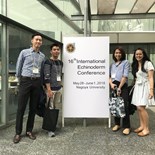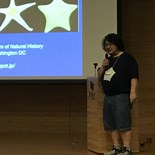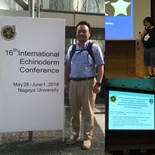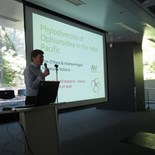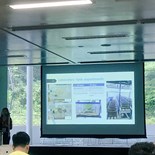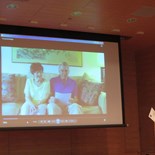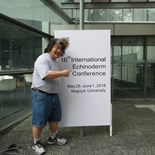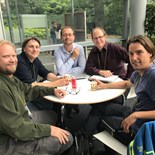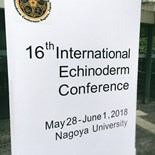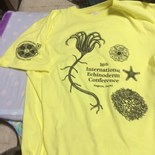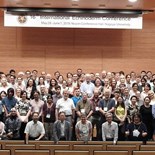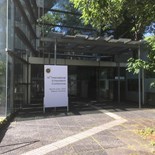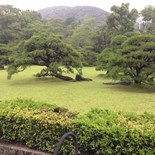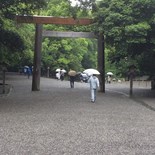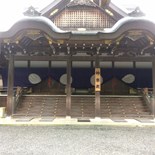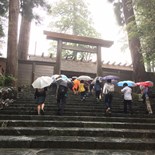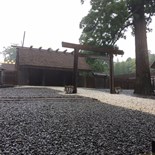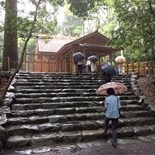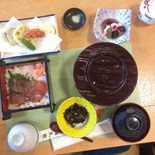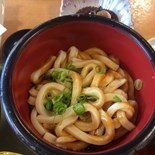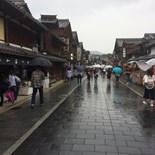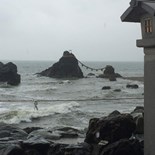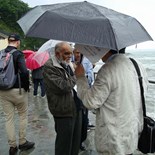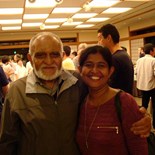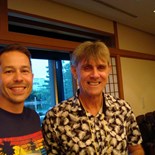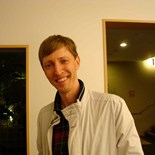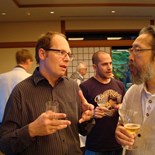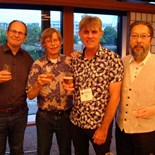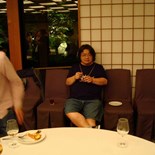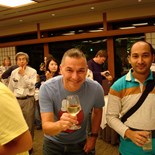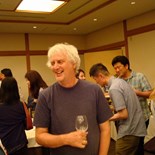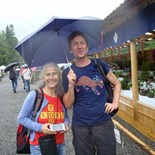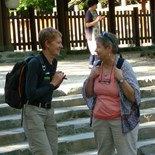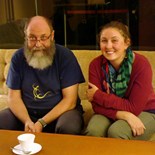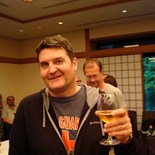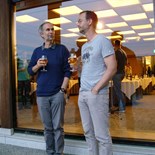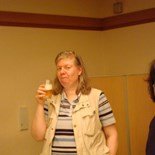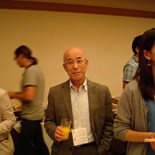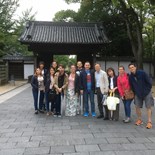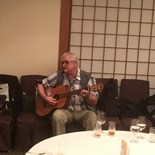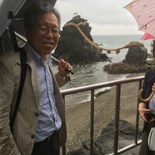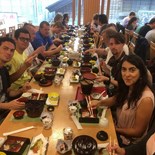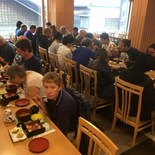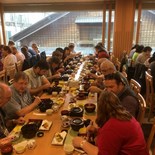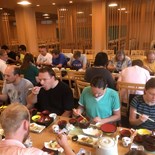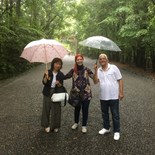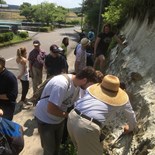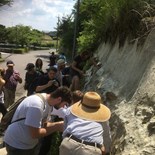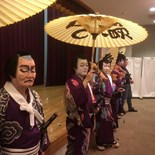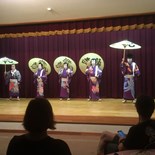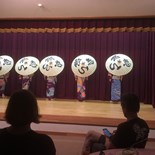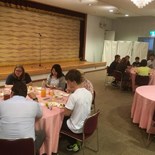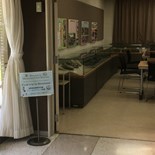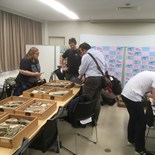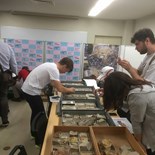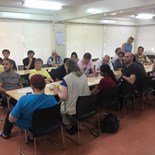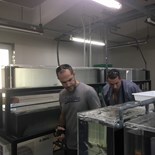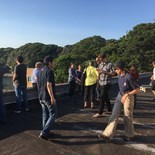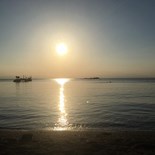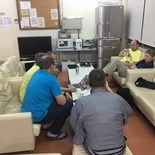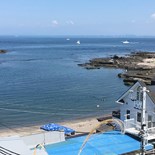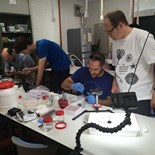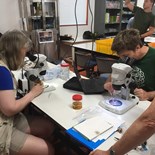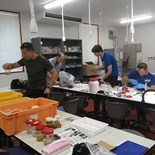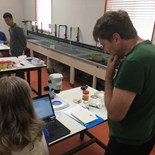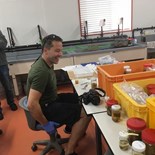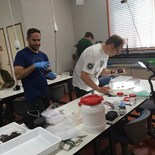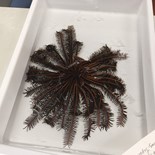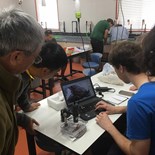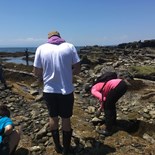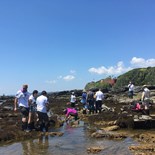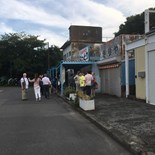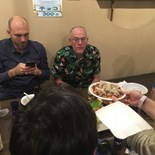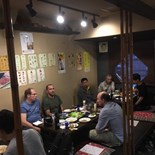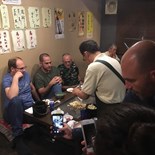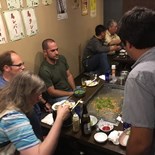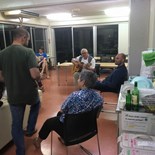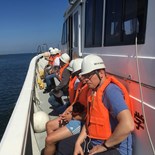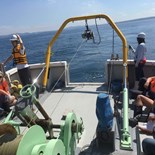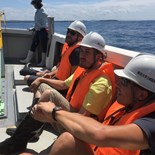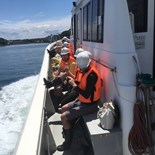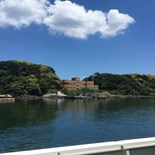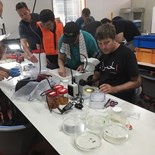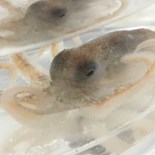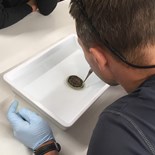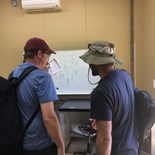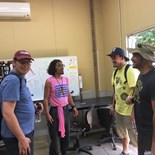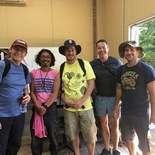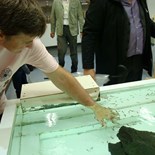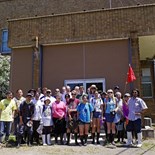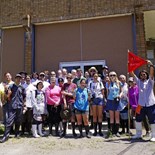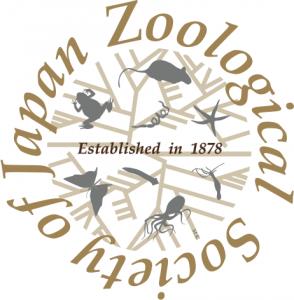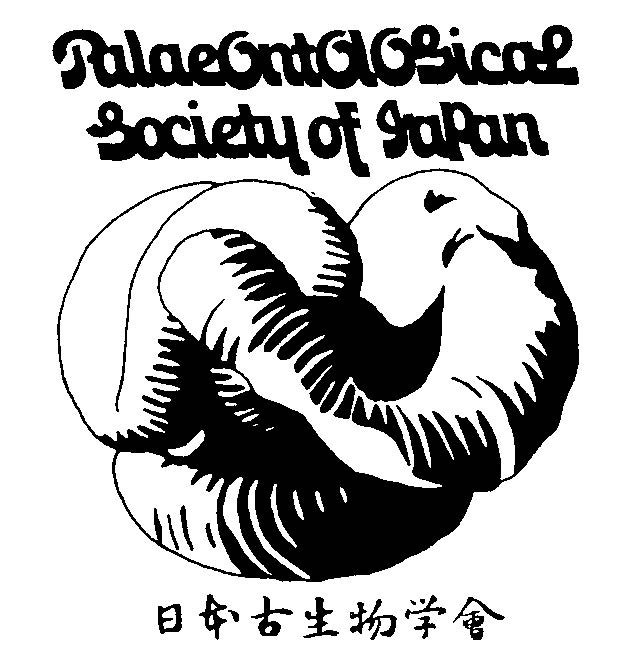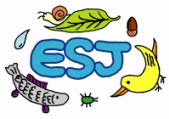
The 16th International Echinoderm conference was held in Nagoya, Japan from May 28 to June 1, 2018.
Updated August 2, 2018
Here you can find the list of all the participants to the 16th IEC, with their e-mail addresses. Also you can find photos of the IEC, including those taken during the field trips. We thank all those who took these photos and for sending these to us.
» List of participants (Excel format)
Updated May 30, 2018
Updated May 22, 2018
Revised program is available from the link below.
Updated May 22, 2018
Additional information about the conference and field trips is available from the link below.
Updated April 26, 2018
Authors and Titles of submitted abstracts.
Thank you for submitting abstracts for the 16th IEC. So far we have received more than 170 abstracts. In order to confirm if these are all the abstracts we received, please check if all your presentation(s) you submitted are included in this list. If you find that your submitted abstract(s) are not in this list, please let me know as soon as possible. Thank you for your cooperation.
Updated April 9, 2018
Thank all of you for registering for the 16th International Echinoderm Conference that will be held in Nagoya, Japan from May 28th - June 1st. There are more than 170 registered researchers and students to this conference. Below we will announce additional information about the conference.
Icebreaker
Icebreaker will be held in Noyori Conference Hall (ground floor) from 16:00 to 18:00 of May 27th (Sunday). Refreshment (alcoholic and non-alcoholic drinks) and some local foods of Nagoya will be served. No fee is required, and all the participants are welcome if your time allows and if you will not suffer from heavy jet lag. At that time, we plan to start registrations of participants in order to avoid busy situation on the next morning. After this icebreaker (at about 18:00), we will visit University Museum, Nagoya University (5 min walk) to look at exhibition of fossil echinoderms, crabs, etc.
Abstracts
We have many submissions of abstracts, for both oral and poster presentations. We are sending acceptance forms or are asking some revisions to these abstracts, and so if you have not received any notification yet, we will soon send it to you.
Oral presentation
We will prepare PC with Windows 10 for presentation. PowerPoint and PDF can be used for your presentation. We have not decided to use Mac, but if you think you need to present by Mac, please contact us in advance. We encourage all the oral speakers to use Windows PowerPoint.
The length of one presentation (except for plenary one) is 15 min including questions and discussions, so please prepare your presentation to finish within 12 min. We will prepare only one projector and one screen in a lecture room.
Poster presentation
The maximum size allowed for the poster board is 163 cm (height) x 113 cm (width), thus poster should be made higher than wide. Surface of the board is smooth metal, so velcro does not work on this board. We will provide special adhesive material for fixing your poster.
Transportation
If you arrive in Centrair Chubu International Airport (NGO), the most convenient way to reach downtown Nagoya is to ride on Meitetsu railway. You can buy a ticket by vending machine or through a counter near the entrance to the Meitetsu station. There are frequent services of various types of trains by Meitetsu, among which "express" and "μ-SKY (Myu-Sky) express" are recommended. All the seats of "μ-SKY express" are in reserved car only, costing extra of 360 yen for seat reservation in addition to a regular ticket. It takes about 30 to 40 min from Centrair Airport to Kanayama or Nagoya station, costing 810 yen to Kanayama and 860 yen to Nagoya station.
I think most participants will stay in hotels in Kanayama or Sakae districts. Followings are the way from Kanayama or Sakae to Nagoya University station by subway.
From Kanayama to Sakae, take subway Meijo Line (clockwise) and the 4th station is Sakae. Sakae is one of the major city centers of Nagoya.
From Kanayam to Nagoya University (Higashiyama Campus), take Meijo Line (anticlockwise), and Nagoya University station is the 11th station from Kanayama. It takes about 22 min, costing 270 yen.
From Sakae to Nagoya University, take Higashiyama Line (East bound to Fujigaoka) and change trains at Motoyama, the 6th station from Sakae. Then take Meijo Line (clockwise), and the first station from Motoyama is Nagoya University station.
When you arrive in Nagoya University, take exit #2 for the Noyori Conference Hall. You can find a display board of "16th IEC" near the exit #2.
If you purchase IC card (for example, "Manaca card"), you can use it for most of the transportation in Japan (except for Shinkansen Express by JR, and some local busses), without purchasing your ticket each time. You can choose Manaca Card of JPY1,000, JPY2,000, JPY3,000, JPY5,000 and JPY10,000. These include deposit of 500 yen. You can add the balance by cash. Seat reservation of "μ-SKY express" should be made in advance (after you arrive in Centrair Airport) before passing the gate of the station.
Welcome
We welcome you to attend the 16th International Echinoderm Conference. This conference is the biggest gathering of echinoderm researchers from all over the world, focusing on, but not limited to, the following subjects: taxonomy and systematics, phylogeny, evolution, molecular biology, biogeography, paleontology, ecology, morphology, reproduction and ontogeny, taphonomy, aquaculture, fisheries and conservation, geochemistry, and history of research.
Location
Nagoya is a big city located between two large cities, Tokyo and Osaka, in the central part of Japan. The Chubu International Airport (NGO) is convenient to Nagoya, connected in less than 1 hr by train to the city center. There are direct flights from many Asian cities, Europe and USA. Nagoya is also connected to Tokyo, Osaka and other cities by Shinkansen (bullet trains, JR system). Therefore, if you plan to extend your stay in Japan before or after the conference and like to visit other cities such as Tokyo or Kyoto, etc., you can plan to use other airports in Tokyo (NRT, HND), Osaka (KIX), etc. where more frequent flights are available from overseas.
For more details, refer to the webpages below:
» http://en.nagoya-u.ac.jp/about_nu/history_data/index.html
» http://www.nagoya-info.jp/en/convention/
The conference will be held in the Noyori Conference Hall of the Higashiyama Campus, Nagoya University. Proposal of special sessions and workshops are welcome.
For the access to Nagoya from “Centrair” Nagoya International Airport (NGO), it is most convenient to take Meitetsu line to downtown Nagoya. Get off at Kanayama station and change to subway “Meijo Line” (anticlockwise), and it takes you to the station “Nagoya University”.
- Access to the Higashiyama Campus, Nagoya University:
http://en.nagoya-u.ac.jp/access/index.html - Access to Nagoya from Centrair International Airport or from Tokyo or Osaka:
http://www.nagoya-info.jp/en/convention/nagoya/location.html - Although it is written for foreign students and researchers staying in Nagoya University for a longer period, the page below is a good introduction to Nagoya and our university.
http://www.eps.nagoya-u.ac.jp/en/info.html
Conference Outline
The conference includes plenary sessions, scientific sessions, poster sessions and field trips. Scientific sessions are held in parallell in two or three rooms. Poster sessions are held in the corridor surrounding these lecture rooms on the ground floor. Proposal of workshops are also welcome. All these sessions and workshops will be held in the Noyori Conference Hall of Nagoya University.
Conference Schedule
- May 27 (Sun)
- Ice breaker
- May 28 (Mon)
- Registration, opening ceremony, plenary presentation, scientific sessions, poster session
- May 29 (Tue)
- Plenary presentation, scientific sessions, poster session
- May 30 (Wed)
- One day field trip (Field trip 1) and banquet
- May 31 (Thu)
- Plenary presentation, scientific sessions, poster session
- June 1 (Fri)
- Plenary presentation, scientific session, closing ceremony
- June 2 (Sat)
- Start of field trips (Field trip 2: one day trip to Mizunami Fossil Museum; Field trip 3: three days trip to Misaki Marine Biological Station)
- June 4 (Mon)
- End of the Field trip 3
Important Dates
- November 1
- Start regular registration (through February 28)
- November 1
- Start abstract submission (through March 31)
- November 1
- Start registration form submission
- February 28
- End regular registration
- March 1
- Start late registration (through April 30)
- March 31
- Close abstract submission, field trip and banquet registration
Registration
- Regular registration (November - February 28)
- Ordinary participant: 30,000 JPY
Student : 10,000 JPY - Late registration (after March 1)
- Ordinary participant: 40,000 JPY
Student: 15,000 JPY
Registration is made through the different webpage (below) which is designed for your payment of registration fee, fees for your field trip(s), and your lodging.
After logged in the page of registration above, you will be asked to input your personal information. Registration fee (and other fees, if necessary) is paid by your credit card. Payment should accompany your Registration Form that describes your participation to various programs, total and each payment.
Abstract
Abstract should be submitted no later than the 31st of March, 2018. It should be written as a Microsoft Word file and sent to the address below:
oji[a]num.nagoya-u.ac.jp
The maximum length of the abstract is one A4 page. The template of the abstract is found in the page below:
Field Trip and Banquet
Mid-conference field trip and banquet
- Mid-conference field trip and banquet are scheduled on the third day of the conference (May 30). We are planning to visit "Ise Shrine", the most sacred and historical place for Japanese people. This trip will be followed by the banquet after returning to Nagoya.
Cost of mid-conference field trip and banquet: 15,000 yen
Post-conference field trip
- Mizunami Fossil Museum: One day trip to this museum located in Mizunami City, Gifu Prefecture. This museum has a long history over 40 years, and is specialized for exhibition and collection of fossils, and paleontological research.. After visiting this museum, we visit an outcrop of local Miocene where we may be able to collect sea urchins (spatangoids). Cost: 10,000 JPY. Max 20 participants. Leaders: Yusuke Ando and Tatsuo Oji
- Misaki Marine Biological Station (MMBS): One of the oldest marine station in the world, belonging to the University of Tokyo. Start on the morning of 2nd of June (Sat) by the journey from Nagoya to Misaki (takes about a half day) and finishes on the afternoon of 4th of June (Mon) in Misakiguchi or in Yokohama. Observation of marine collection (incl. echinoderms) in MMBS, as well as visit to the Marine Park nearby, rocky beach combing, and if weather condition allows, dredging tour in Sagami Bay. Cost: 30,000 JPY. Max 20 participants. MMBS is close to Yokohama and Tokyo, therefore the participants can use Haneda (HND) or Narita (NRT) airports on their way to home. Return travel to Nagoya is not included. Leaders: Masanori Okanishi, Hisanori Kohtsuka and Tatsuo Oji
Lodging
Our university does not have dormitory where participants to this conference can stay. However, through a travel bureau we have booked several tens of rooms in hotels in Nagoya for the attendees. Please use the registration webpage to book your room, if necessary. The room charge ranges from 7,500 to 11,500 yen per night (incl. breakfast), and they are mainly in Kanayama district in downtown Nagoya city. These rooms will be booked on the “first come, first served” basis. Room registration will be open in November.
Photos
Conference Hall
Ise Shrine & Banquet
Mizunami Trip
Misaki Trip
Organizing Committee Members:
- Tatsuo Oji (Chair) oji[a]num.nagoya-u.ac.jp
- Tatsuo Motokawa
- Mieko Komatsu
- Toshihiko Fujita
- Yukio Agatsuma
- Ken’ichi Kanazawa
